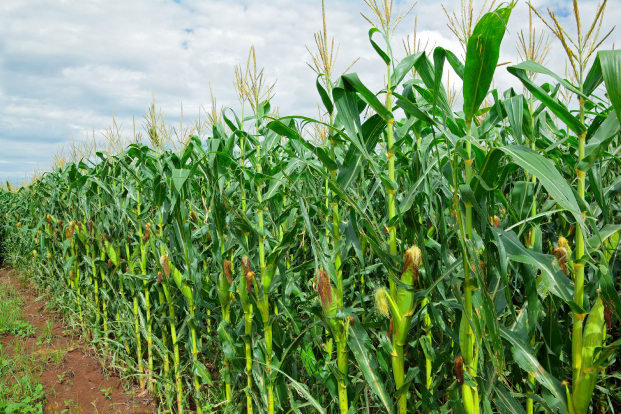Agbiz Morning Market Viewpoint on Agri-Commodities: 04 July 2017.

Silos ready for record maize harvest.
June 27, 2017
Agbiz Morning Market Viewpoint on Agri-Commodities: 12 July 2017.
July 12, 2017
Highlights in today’s morning note
Maize:
Harvesting is underway across the country and could gain momentum this week due to forecast warm and dry weather conditions in the maize belt.
In terms of domestic supplies, the county’s 2017/18 total maize supplies could reach 16.04 million tonnes. This figure includes opening stock of 1.00 million tonnes, as well as expected commercial deliveries of 15.04 million tonnes. This is 31% higher than the previous season’s supplies. In addition, this is well above the annual domestic consumption of 10.5 million tonnes.
Ideally, this would lead to higher exports, but that will not be the case due to weak regional demand. At best, total maize exports could reach 2.2 million tonnes and the remainder will be registered as carryover stocks.
On the global front – This morning the Chicago maize market was down by 0.79% from levels seen at midday yesterday, with a stronger US Dollar against major currencies underpinning the market.
Overall, the International Grains Council forecasts 2017/18 global maize production at 1.025 billion tonnes, which is 4% lower than the previous season. The decline will possibly be in the US, Brazil, Argentina, China and the EU countries. As a result, the 2017/18 global maize ending stocks ease at 199 million tonnes, a 13% annual decline.
Wheat:
With the crop still in early growing stages, weather remains a key focus in the South African wheat market. The forecast for the next two weeks shows signs of light scattered showers across the winter wheat growing areas.
For irrigation areas, this will not be much of a problem, particularly in the Northern Cape and Free State provinces, where the average water level in the dam is above 80% full . However, wheat plantings in the Western Cape province are mostly dryland, therefore persistent dry weather conditions could negatively affect the crop as soil moisture remains at lower levels.
On the global front – This morning the Chicago wheat price was up by 0.38% from levels seen at midday yesterday as dry weather continues to threaten the US spring wheat crop production.
Elsewhere, there are lingering concerns that drier weather conditions in parts of the EU, Black Sea region and Australia could negatively affect the crop. The National Bank of Australia has recently revised its 2017/18 wheat production estimate down to 23.3 million tonnes – a 34% annual decline.
The International Grains Council forecasts 2017/18 global wheat production at 735 million tonnes, which is 3% lower than the previous season. The decline will possibly be in Australia, the US, Canada, Argentina, Ukraine, Kazakhstan and China. Therefore, the 2017/18 global wheat ending stocks could decline by 0.2% year-on-year to 241 million tonnes.
Soybean:
Yesterday the South African soybean market ended the day in positive territory, with support coming from higher Chicago soybean prices, as well as a weaker Rand against the US Dollar.
In global markets – This morning Chicago soybean price was up by 0.10% from levels seen at midday yesterday due to concerns that drier weather could negatively affect the US soybean crop.
At the beginning of the week, about 66% of the crop was rated good/excellent, which is 6% behind the same period last year. Tomorrow’s crop assessment data could paint an even worse picture as conditions have remained dry since the last Monday (26 June 2017). More concerning is that the weather outlook paints a bleak picture for most parts of the US Midwest this week.
In terms of global production, the International Grains Council forecasts 2017/18 global soybean production at 348 million tonnes, down by 1% from the previous season. The notable decline will most probably be in the US, Brazil, India and Paraguay. Subsequently, the 2017/18 global soybean ending stocks are estimated at 41 million tonnes, which is a 4% annual decline.
Sunflower seed:
From a global perspective – The EU sunflower seed market lost ground during yesterday’s trade session with the price down by 0.25% from the previous day, closing at S$400 per tonne due to prospects of large supplies.
Recent data from the European Commission shows that the region’s 2017/18 sunflower seed production could reach 9.0 million tonnes, which is 1% below the previous estimate, but 5% higher than the previous season.
The weather remains a key focus in the market, with prospects for the next few days showing possibilities of dryness, which is not conducive for crops.
Meanwhile, the Black Sea’s sunflower oil market gained 0.14% from the previous day, closing at US$733 per tonne due to higher crude oil prices.
RSA Potatoes:
The South African potatoes market gained ground in yesterday’s trade session with the price up by 0.11% from the previous day, closing at R26.83 per bag (10 kg bag). These gains were largely on the back of an increase in buying interest.
The market started the day with higher stocks of 1.30 million bags (10 kg bags). However, during the session, there was an increase in buying interest, coupled with lower deliveries due to slow harvest activity after the weekend. This subsequently led 20% decline in stocks to 1.04 million bags (10kg bags).
SAFEX beef carcass:
The SAFEX beef carcass market gained ground during yesterday’s trade session with support coming from a slight increase in volumes traded on the stock exchange.
In addition, the general sentiment in the beef carcass market remains bullish due to easing slaughter activity, as farmers continue to restock their herds after the 2015-16 drought.
Data from the Red Meat Levy Admin shows that South African farmers slaughtered 193 373 head of cattle in April 2017, down 19% from the previous month and the corresponding period last year. We will monitor beef slaughtering activity closely to determine the impact on prices.
Click here to read more.



